Not to be confused with the X-Men character, the wolverine is a solitary, nocturnal predator that looks a bit like a small bear but with a long bushy tail similar to that of the skunk. The chances of you seeing a wolverine are extremely small due to their preference for cold, remote climates high above sea level.
Wolverines have a reputation for being bad-tempered and aggressive, but is that a true reflection of this rare animal? Let’s find out what life is like for a wolverine, how it came to be such an aggressive predator, and what the future looks like for an animal whose population is so depleted.
What Is a Wolverine?
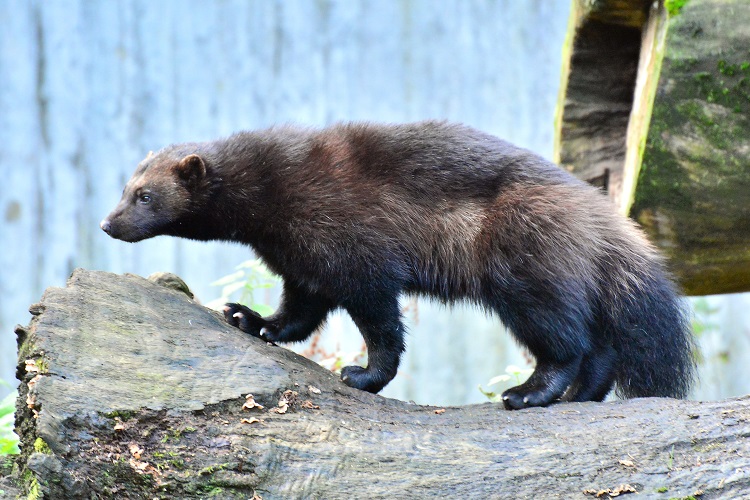
Are wolverines the largest members of the weasel family? Many people think so, but at six feet long, the South American giant otter is much larger, just not quite as ferocious.
North American wolverines are about the size of a medium dog, but their strong jaws and aggressive natures make them appear bigger especially to us humans.
The Taxonomy of the Wolverine
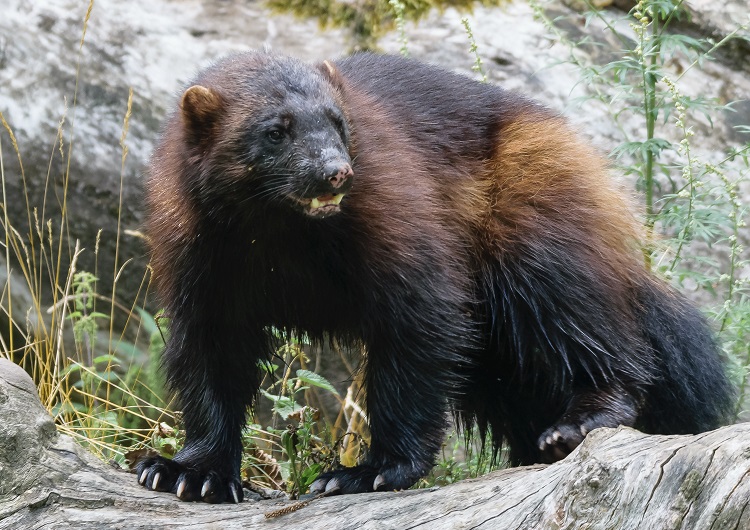
Wolverines belong to the mammalian class and the order Carnivora. They are formidable predators that also enjoy a meal of carrion, or rotten meat, from time to time.
There are 12 families within the Carnivora order, including the family Mustelidae, to which wolverines belong. They are closely related to the weasel and other mustelids, including badgers, otters, and ferrets.
The wolverine’s scientific name, Gulo gulo, comes from the Latin words for throat and gluttonous and refers to the wolverine’s voracious feeding habits.
The Natural History of the Wolverine
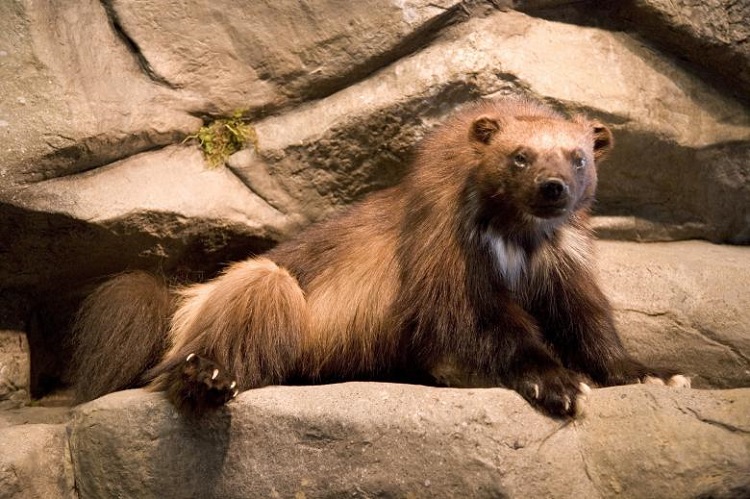
Before the first wolverine appeared in the remote habitats it now calls home, a prehistoric carnivore known as a Plesiogulo roamed the forests of North America. This creature was thought to be the ancestor of the modern-day wolverine, but recent research suggests that’s unlikely.
Quite where the wolverine came from remains something of a mystery, although fossil records indicate that smaller mustelids existed long before the wolverine came along. The oldest known mustelids date back to the Eocene period and lived some 56 to 33.9 million years ago.
There’s also some confusion concerning different species of wolverine. For a long time, the Old and New World wolverines were considered separate species, with the North American variety being known as the Gulo gulo luscus and the Eurasian species, Gulo gulo.
Scientists subsequently decided that the differences between the two species were negligible and combined them as a single species, Gulo gulo.
What Are the Physical Characteristics of the Wolverine?
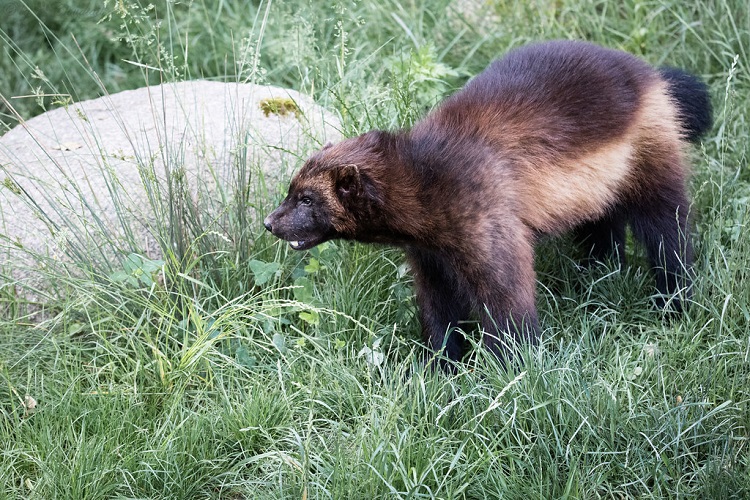
The first thing you tend to notice about the wolverine is its beautiful fur coat. It’s covered in a long, glossy fur coat that is predominantly brown, with streaks of silver or blonde hairs running along each of its flanks.
Wolverines are stocky animals with short legs and sharp claws. They resemble bears with their broad heads and small, rounded ears and also stand flat on their feet, adopting the same semi-plantigrade posture utilized by both bears and humans.
The wolverine has powerful jaws and large teeth that enable it to break through bone and frozen meat.
Female wolverines are roughly 30-40% lighter than males, who grow up to 1.5 feet tall.
The Behavior of the Wolverine and Why It’s Called a Glutton
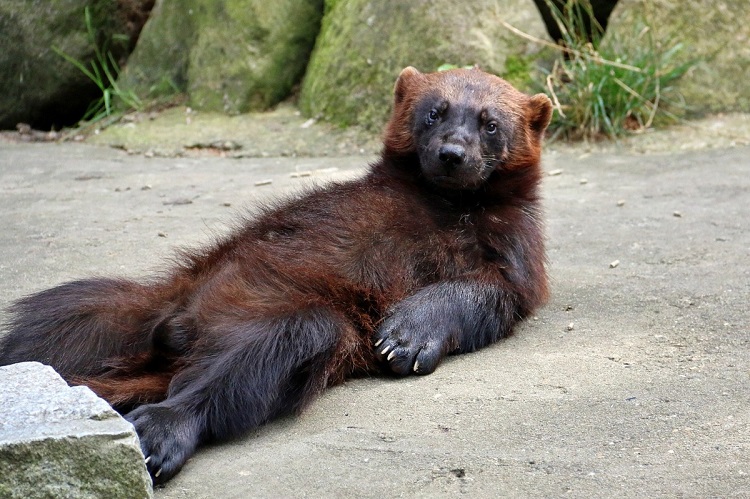
The wolverine attacks its prey with a ferocity so intense it looks like it’s starving. This ravenous approach to food has earned it a reputation for being both extremely aggressive and gluttonous to the point of being greedy, but is that fair?
It’s certainly true that the Wolverine is both strong enough and plucky enough to take on and kill prey much bigger than itself. It’s also happy to eat up the remains of anything killed by wolves or other large predators, but that sounds more like survival than gluttony!
Although wolverines are largely solitary and occupy large home ranges designed to reduce intraspecies competition, they can be sociable when resources permit.
Researchers studying wolverines in South-central Alaska observed the animals “air wrestling and playing with each other” but noted that this only occurred in spring when food is plentiful.
The Diet and Hunting Techniques of the Wolverine
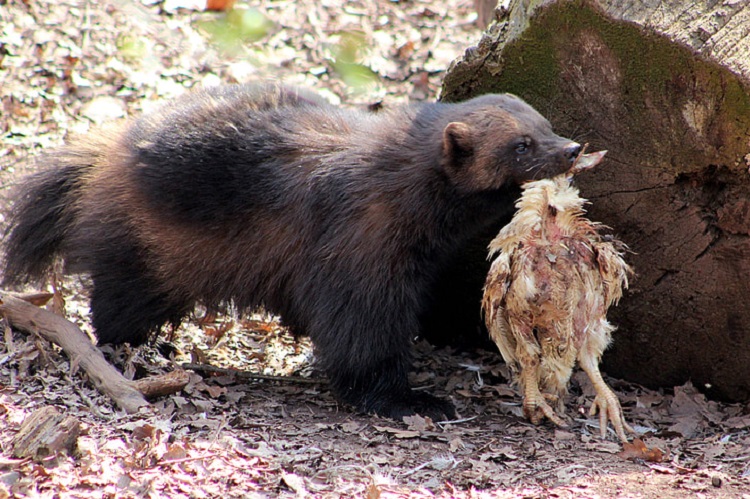
Like most mustelids, wolverines are opportunistic hunters and scavengers. They will eat almost anything they can find or catch, depending on availability.
Studies suggest that the wolverine’s diet varies from season to season. In spring, there’s greater availability of larger prey species, like beaver and deer, so the wolverines encounter these more often.
During the winter months, they primarily scavenge from the kills of other larger predators, while in summer smaller prey species like Arctic ground squirrels and snowshoe hares make up much of the wolverine’s diet.
Wolverines are extremely strong for their size, and in the right circumstances, can overpower large prey species like moose and caribou.
They will also prey on livestock, especially in spring when the young are at their most vulnerable.
What Is the Average Lifespan of the Wolverine?
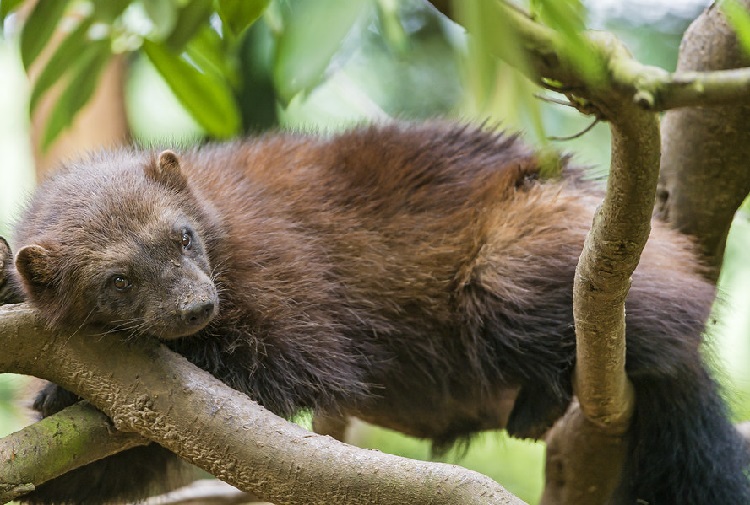
In the wild, wolverines live for an average of seven years, although some individual wolverines have been known to survive into their teens. Those in captivity can live for up to 18 years.
How Big Is a Wolverine’s Range?
Wolverines aren’t the most sociable of creatures and like to keep their distance from one another for most of the year.
They establish huge home ranges that, according to the Alaska Department of Fish and Game, can extend up to 1,000 square kilometers.
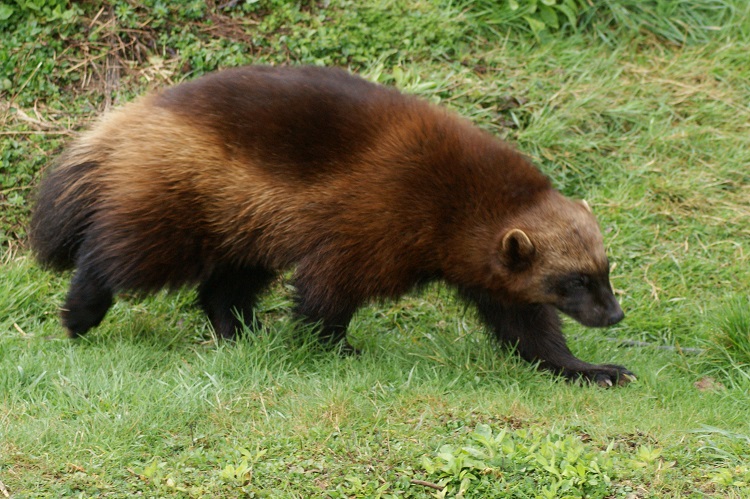
Female wolverines are a little more conservative, restricting their territories to between 300 and 600 square kilometers, compared to the males, whose territories range from 700 to 1,000 square kilometers.
Wolverines travel up to 24 km a day hunting and foraging for food simply because resources are so limited in the cold, dry environments they frequent. That means they need plenty of room if they’re to avoid competition.
Both male and female wolverines are highly territorial and will aggressively guard their range or territory against other wolverines and smaller predators.
Five Fun Facts About Wolverines
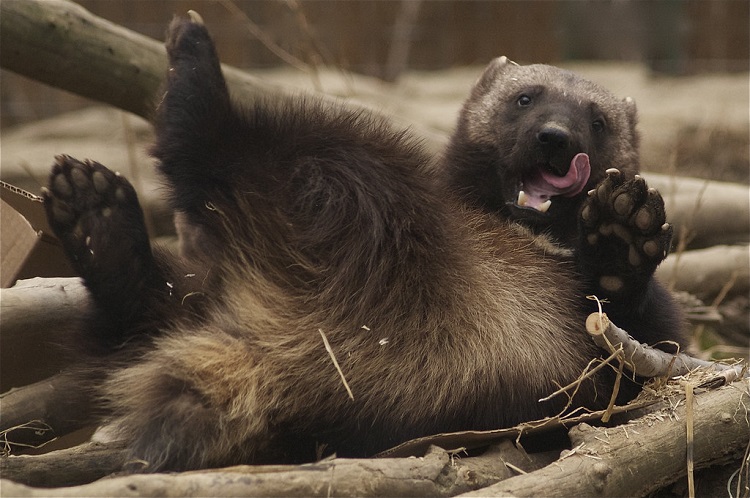
#1 Female Wolverines Practice Delayed Implantation
After becoming pregnant, female wolverines keep their embryos dormant until the conditions improve and there’s enough food to sustain the mother and her kits.
#2 Wolverines Have Unique Teeth
Wolverines have large, sharp incisors that they use to grip onto their prey and rotated molars that enable them to crush bone and munch their way through frozen flesh.
#3 Wolverines Need Deep Snow
Wolverines rely on deep snow to protect them against other predators and cold temperatures. They burrow into hardened snowdrifts or utilize the softer snow under fallen trees to create long snow tunnels and dens.
#4 Wolverines Don’t Socialise With Others of the Same Sex
Wolverines are solitary and generally hostile toward others of the same species. Female wolverines will tolerate the presence of males during the breeding season but rarely get along with other females.
#5 Wolverines Have Lots of Nicknames
Wolverines go by several other names, including skunk bear, devil bear, and carcajou.
Where Do Wolverines Live?
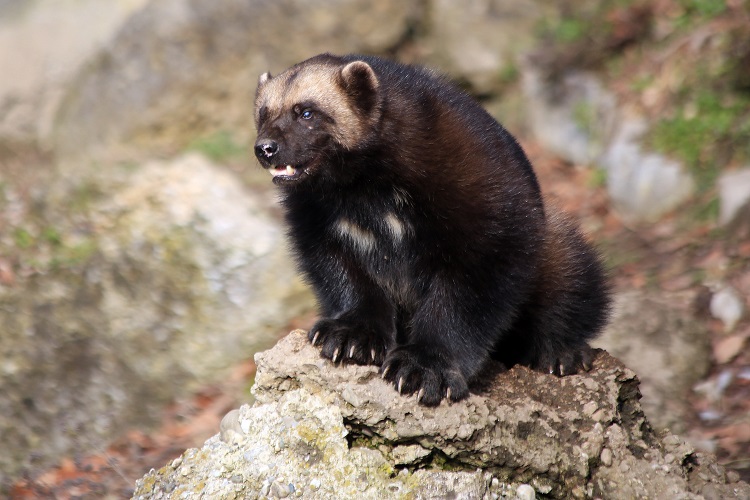
Wolverines live in cold, inhospitable environments in the Northern Hemisphere, occupying boreal forests and tundra in both North America and Northern Europe.
There is a relatively stable population in the Northern Rockies, and smaller groups occupy parts of both Alaska and Canada.
The wolverine has adapted to live in hostile environments where the temperature can drop as low as -34° C (-30° F).
Can Wolverines Survive in Captivity?
There are only around 80 to 100 wolverines currently living in captivity, and while the animals appear to live relatively long and happy lives in zoos and parks, breeding has proved extremely difficult.
Keeping an animal that naturally travels tens of kilometers every day isn’t easy, and studies suggest that enclosure size has a notable impact on the well-being and reproductive success of captive wolverines.
While I generally prefer wildlife to stay wild, the natural populations of wolverines are declining so fast that breeding in captivity may be the only way to protect this species against extinction.
Keeping wolverines in captivity has proved to have other advantages as well.
Steve Kroschel has spent years training captive wolverines to sniff out avalanche survivors and believes the species is much better suited to the role than dogs.
Wolverines are such quick learners that Kroschel says it only takes a week to train them to find a human scent. He still doesn’t trust them enough to dig someone out of the snow unsupervised, even though he says they “stay gentle to you” once imprinted.
The Distribution of the World’s Wolverine Population
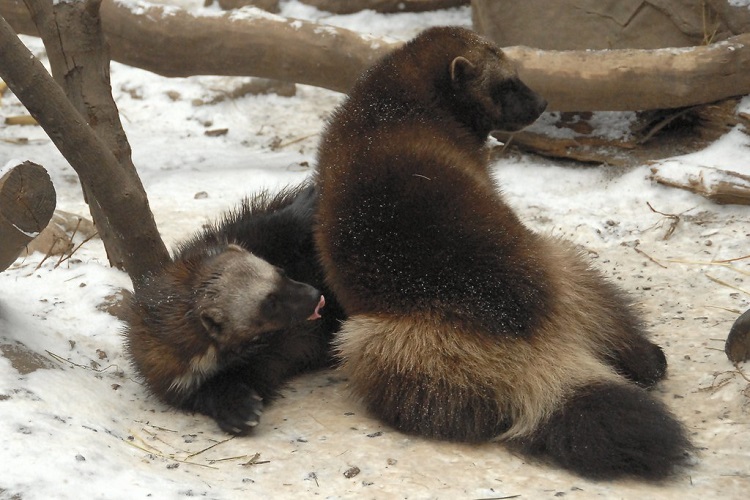
Wolverines only inhabit a small portion of the earth’s surface and are restricted to the boreal zone circling the northern hemisphere.
Wolverine populations occur in parts of Russia, with their ranges extending west into the Altai Mountains and parts of Mongolia. They also live in northeast China, where the Great Khingan Mountains provide a suitably chilly environment.
Since disappearing from historical ranges like those found in the Sierra Nevada mountains, the largest populations of wolverines are now found in the northern parts of the Rocky Mountains, Alaska, and Northern Canada.
The Habits and Lifestyle of the Wolverine
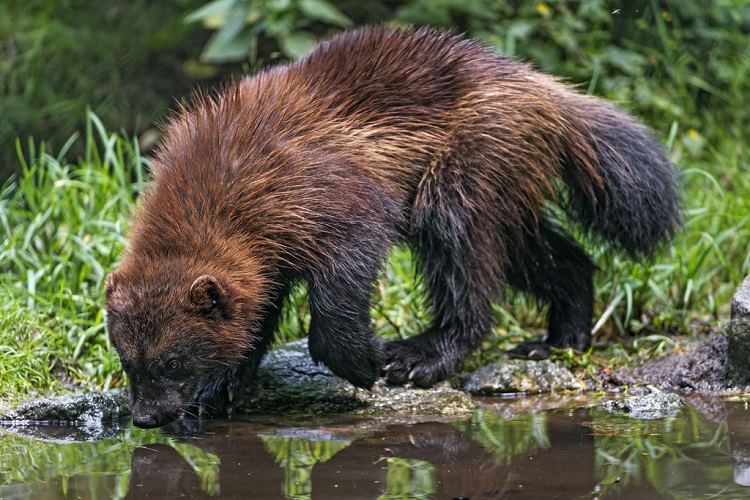
With their thick fur coats and versatile diets, wolverines do not need to hibernate, even in the depths of winter. They are active all year round, although they tend to rely on scavenging to supply their nutritional needs during the winter months.
Wolverines are highly territorial and use scent marking to maintain their ranges. They have scent glands on their feet and also urinate to demarcate the edges of their territories. This isn’t always enough to deter potential mates or rivals, and scuffles do occur, especially during the breeding season.
Although predominantly nocturnal, wolverines are also active during the day and will often engage in three to four hours of intense activity before resting for the same length of time.
They are fast, agile creatures that can run at up to 30 mph and climb trees with surprising dexterity.
Mating and Reproduction in the Wolverine
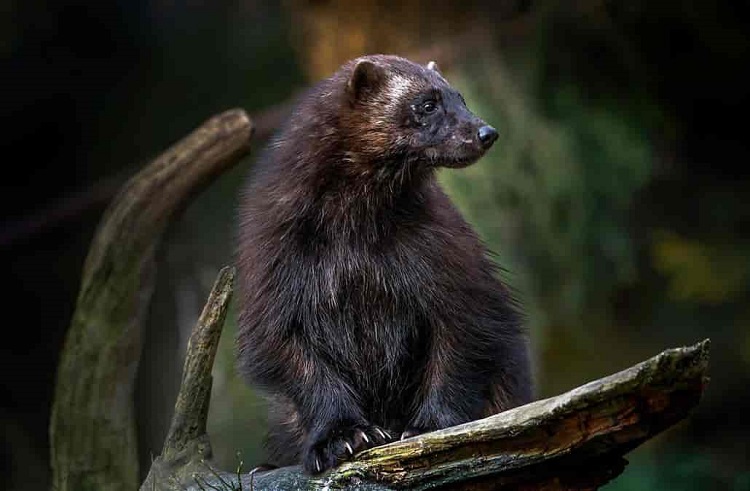
It’s difficult to meet the perfect male wolverine when you live hundreds of kilometers away and are naturally hostile, but wolverines do manage to get together at least once a year and overcome their animosity long enough to reproduce.
The male wolverine is polygamous and will cover several females. They have a long mating season to give them a chance to travel long distances between the females’ home ranges and will mate at any time between May and August.
The female controls the development of her embryos using delayed implantation and only embeds the embryos in her uterine wall several months after mating.
The gestation period only lasts for around 30 to 50 days, during which the females build dens in the snow. They give birth to between two or three kits in late winter or early spring, and the females raise these youngsters in the den until they’re ready to be weaned.
Wolverine kits develop quickly and are almost completely self-reliant by the time they reach adult size at approximately six months old. They are sexually mature at two years old, although few females produce young in their first year of breeding.
How the Wolverine Practices Defense and Aggression
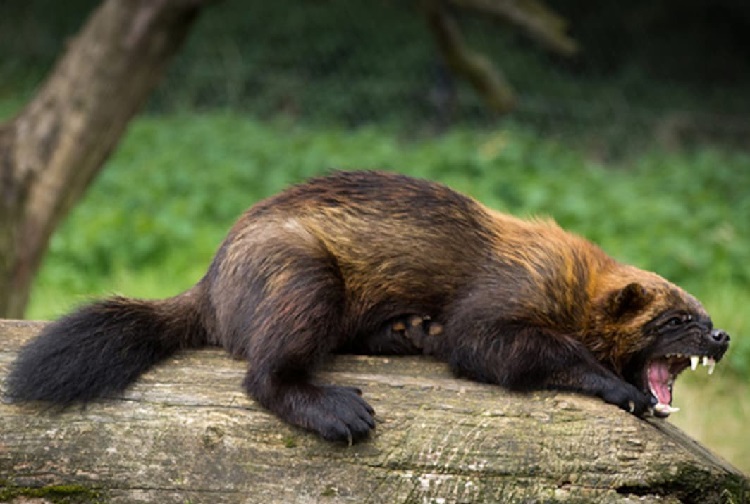
There aren’t many animals brave enough to prey on the wolverine, but those that do must contend with its considerable ferocity, as well as its knife-like claws, sharp teeth, and powerful jaws.
The wolverine has plenty of weapons with which to defend itself, so doesn’t need any fancy defense mechanisms. It just bites, kicks, and scratches like a nasty cat, relying on its natural aggression to intimidate its opponent.
Despite that, the wolverine doesn’t swagger about looking for a fight and is generally quite shy, especially around humans. It will also avoid confrontations with larger predators wherever possible.
Studies conducted in Norway show that wolverines will seek shelter in nearby snow holes rather than fight a wolf for its kill, suggesting the animal’s not quite as aggressive as humans seem to think.
What Natural Predators Does the Wolverine Have?
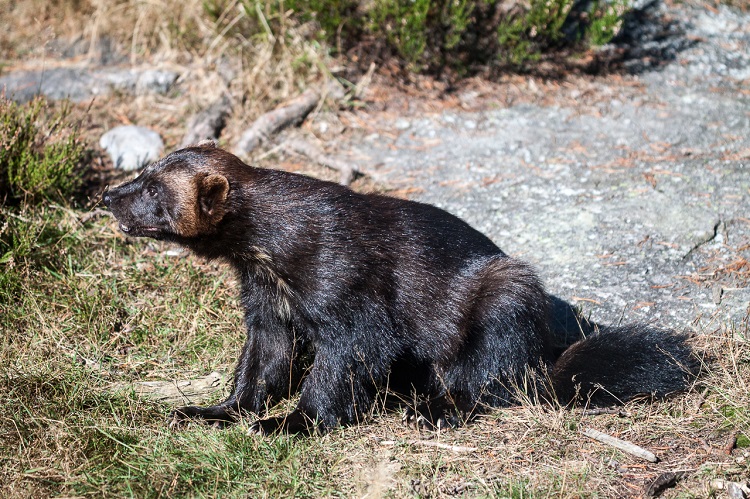
Wolves will, reluctantly, prey on wolverines if there’s no easier prey available, as will the mountain lion and some species of bears.
Humans present a much bigger threat to the wolverine population than any of its other predators. We’ve been trapping these animals for their beautiful glossy coats for hundreds of years despite their declining population.
As wolverines occasionally attack livestock farmers, and herders have also come into conflict with them, hunting them down and killing them to protect their sheep and reindeer.
What Threats Are Endangering the Wolverine?
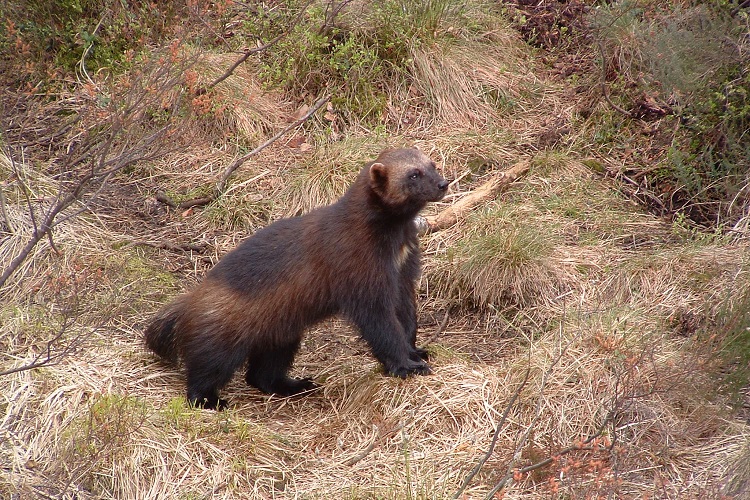
The population of wolverines has been declining since the 19th century when trapping and hunting reached their peak. Even today, wolverines are hunted for sport and trapped for their pelts.
Climate change is also negatively impacting these animals because they’re so reliant on deep snow for their survival and reproduction.
While the wolverine range once included the Southern Rocky Mountains and extended down into New Mexico, fur trapping and human development have now restricted them to a comparatively small section of western mountains and boreal forest.
Roads, forestry, and oil and gas exploration have all contributed to this habitat loss and fragmentation, while global warming threatens to melt the snowy refuges the wolverine calls home.
Other threats that could negatively impact the wolverine population include disease and food scarcity, although their ability to scavenge provides some cushion against inadequate prey abundance.
What Role Does the Wolverine Play in Modern Culture?
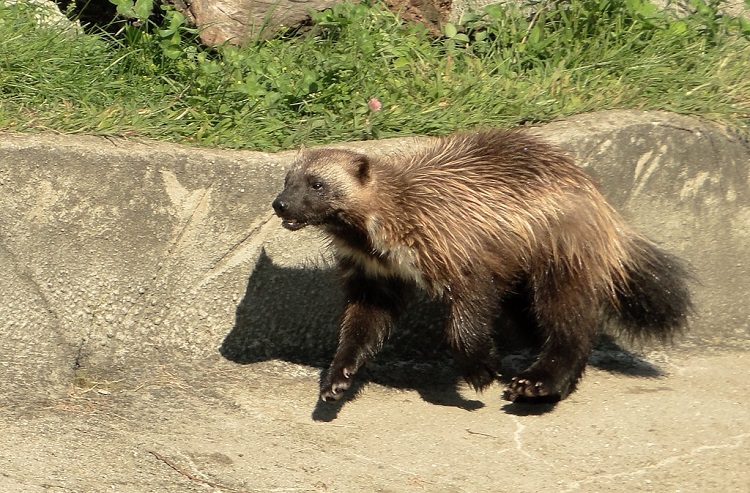
The biggest cultural impact wolverines have had in recent years is as the inspiration for the X-man character, Wolverine. Before that, they frequently featured in Native American stories as symbols of success or good fortune.
The tribes of Labrador and Quebec saw the wolverine as a shape shifter and trickster, while the Alaskans celebrated them for their strength, diligence, and tenacity.
Wolverines are particularly popular in the so-called Wolverine State of Michigan and inspired many sports teams to name themselves after the animal.
The Conservation Status of the Wolverine
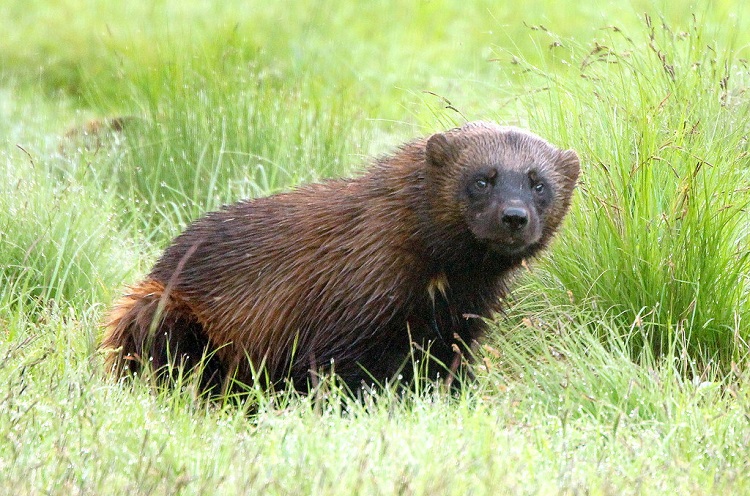
The wolverine naturally has a low population density because its large territorial needs make it highly sensitive to overcrowding. Even though there are only between 15,000 and 30,000 individuals left worldwide, the IUCN still lists the wolverine as being a species of least concern.
It does recognize that the population is declining but doesn’t believe it’s at a near-threatened level just yet.
Wolverines are not protected by the Endangered Species Act, even though the North American population is estimated to consist of just 300 individual wolverines. They were denied protection in 2020, despite appeals by The Wolverine Foundation and other conservation groups.
Some conservationists are taking matters into their own hands, like Conservation Northwest, which is conducting field research on the recovery of the wolverine population in the North Cascades Range in Washington. They are also seeking to restore the wolverine’s natural habitat in the region.
FAQ’s
How Much Does a Wolverine Weigh?
Females are smaller and lighter than wolverine males, usually weighing somewhere between 13 to 26 pounds (6-12 kg). The larger males can get up to 40 pounds (18 kg), but the average weight is usually around 32 pounds (14.5 kg).
Can a Wolverine Hurt a Human?
Wolverines may not be particularly big, but they’re stronger and more ferocious than most breeds of dogs, and we all know how much damage they can do!
A wolverine could easily hurt a human with its teeth and claws if it chose to, but no such attacks have ever been documented.
Even Steve Kroschel, who lets his captive wolverines “bite me on the neck and drag me around,” says he’s never sustained a serious injury or been sent to the hospital emergency room.
Where Are Wolverines Found?
Wolverines are only found in the Northern Hemisphere, where it’s cold enough to guarantee regular snowfall. Global warming has driven them out of some of their southern ranges and they are now present only in the remote areas of the boreal forests and subarctic or alpine tundra habitats.
There are wolverine ranges in North America, Canada, and Alaska, and these adaptable animals also frequent parts of Northern Europe, as well as Russia, Mongolia, and China.
What Is the Scientific Name for the Wolverine?
The wolverine’s scientific name is Gulo gulo, which is Latin for throat and glutton. It suggests that the wolverine will shovel food down its throat as fast as possible until its considerable appetite is satisfied!
Conclusion
Wolverines have carved out a niche for themselves in arctic and sub-arctic environments and, as large mustelids, have taken on a small but critical role. Not only do they help control populations of smaller prey species, but they also clean up after bears and other large predators, helping to reduce disease and keep the ecosystem healthy.
The declining population of wolverines in North America is indicative of an environment under strain. Because they need large, interconnected territories in which to hunt and roam, wolverines are, scientists say, “an important bellwether of well-connected, productive, and intact ecosystems.”
Let’s hope the efforts to boost the existing population of wolverines and their habitats prove successful and give these curious creatures a chance of surviving despite the challenges caused by climate change and habitat fragmentation.


